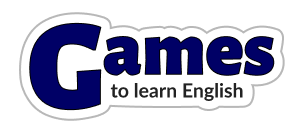Numbers
You can share this page by using the link below.
For numbers 1 - 10, click on review and then click on 'play' from that screen.
This is a small game for learning numbers in English. Students listen or read and then click on the matching number.
The main aim of this game is to practice using numbers in English. This is done through the mini-game in which students listen to audio and then click on the matching number. The hope is that this will increase familiarity and give practice in listening to how numbers sound.
The second aim is to present or introduce numbers for any students who do not know them. While numbers as a topic is quite basic for ESL learners, it is possible that some of the higher numbers may be completely new to some students and so they need some guidance on how they sound.
There are 10 sets of numbers:
Easy mode
Set 1
- Thirteen
- Forty
- Nine
- Ten
- Zero
- Eleven
- Fourteen
- Thirty
- Fifteen
- Fifty
Set 2
- Twelve
- Twenty
- Sixteen
- Seventeen
- Eighteen
- Nineteen
- Sixty
- Seventy
- Eighty
- Ninety
Set 3
- Twenty one
- Thirty two
- Twenty six
- Forty seven
- Fifty three
- Fifty nine
- Ninety nine
- Eighty six
- Sixty eight
- Seventy five
Set 4
- One hundred and twenty
- Two hundred and sixty
- Three hundred and ninety
- Four hundred and thirty
- Five hundred and forty
- Five hundred and sixty
- Six hundred and ten
- Seven hundred and seventy
- Eight hundred and fifty
- Nine hundred and eighty
Hard Mode
Set 5
- One hundred and fifty three
- Two hundred and ninety nine
- Three hundred and eighteen
- Four hundred and eighty two
- Five hundred and thirty three
- Five hundred and forty one
- Six hundred and seventy six
- Seven hundred and fourteen
- Seven hundred and twenty six
- Nine hundred and sixty eight
Set 6
- One hundred
- Three thousand
- Two hundred
- Five hundred
- One thousand
- Seven thousand
- Ten thousand
- Fifty thousand
- Sixty thousand
- Ninety thousand
Set 7
- Five hundred and twenty six
- Seven hundred and thirty three
- Six hundred and forty four
- One hundred and fifty seven
- Eight hundred and sixty five
- Four hundred and sixty two
- Two hundred and seventy one
- Nine hundred and eighty three
- Three hundred and ninety four
- Six hundred and ninety nine
Set 8
- Eleven hundred
- Twelve thousand
- Sixteen hundred
- Eighteen thousand
- Two thousand five hundred
- Twenty five thousand
- Five thousand two hundred
- Fifty five thousand four hundred
- Six thousand two hundred and fifty
- Six thousand seven hundred and sixty
Set 9
- Four thousand nine hundred and sixty nine
- Eight thousand two hundred and six
- Twelve hundred and twenty one
- Three thousand seven hundred and seven
- One thousand three hundred and ninety one
- Six thousand four hundred and fifty three
- Seven thousand and nineteen
- Two thousand and thirty nine
- Five thousand one hundred and seventy four
- Nine thousand five hundred and eighty six
Set 10
- Sixteen thousand and sixty
- Twelve hundred and twenty
- Eighteen thousand eight hundred
- Nineteen thousand and thirty
- Twenty eight thousand six hundred
- Fifty eight thousand nine hundred
- Five thousand nine hundred and eighty
- Four thousand five hundred and ten
- Nine thousand and ninety
- Sixty six thousand and sixty
In the mini-game you take control of a small monster and you have to help him survive by pointing and clicking to make jump him on blocks. Three blocks are shown and each has a number displayed in the middle. The audio of one of these numbers is then played and you have to move the monster to the matching block. If you pick the correct block, then the monster survives, but if you choose badly, then the monster falls off the bottom of the screen and the game is over.
It is hoped that learning can take place through the association of audio/text with the numerical digit. Students will see and hear the numbers and then have that paired with the digits displayed. It is hoped that repeatedly doing this will increase familiarity and practice number ability. I think that the 2 variations of receptive recognition are covered here: in the game, students listen to or read the number and then match that to a numerical digit; in the presentation screen, students can see the digits and then can click to hear how they are spoken or see how they are written.
Leave any comments below.

Comments
very good
- Anon
to easy bro
- Leo and
THE BEST GAME EVER this is my new gaming
- alejandro
I like math
- Mr. Dũng
i dont like the game
- tinus